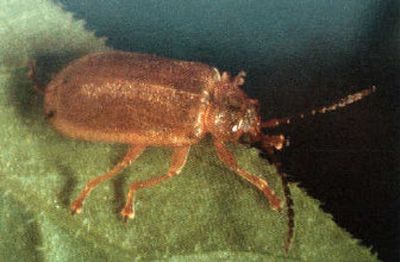Fighting the war on weeds

Chemical spraying continues to be among the most effective attacks on noxious weed infestations. Spot spraying on private property reduces costs and the amount of chemicals on the land.
Other weapons in the arsenal include:
Biological agents such as beetles work well on dense stands of weeds, such as knapweed and loosestrife. The bugs must be moved and supplemented as they consume their weedy food supply or perish in harsh winters.
Goats are used in some areas to keep Dalmation toadflax, leafy spurge, spotted knapweed and other weeds cropped back until grass can eventually out-compete them. The Clearwater National Forest has had some success with the goats, and Helena spent $11,000 last year to lease 850 weed-eating goats for Mount Helena. The goats must be tended to keep them moving by day and penned at night.
Planting grass and other vegetation and mulching other areas and disturbed sites reduces the area for weeds to take hold.
Hand-pulling is a good option in small properties, or along trails where a little education can recruit many volunteers to pause and crop back trouble spots as they hike into recreation areas.
Global Positioning technology is being used in vast wild areas, such as Hells Canyon, to pinpoint and check the spread of weed infestations.